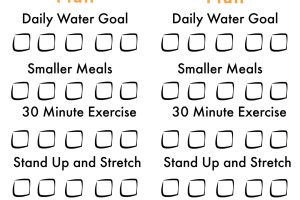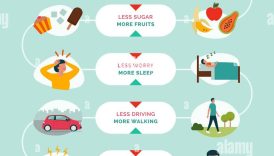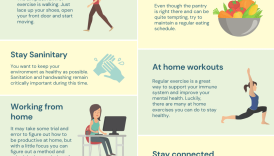The Ultimate Guide to Designing a Sustainable Healthy Lifestyle Plan

Understanding Sustainability
In today’s rapidly changing world, the term “sustainability” often emerges in conversations about eco-friendliness and responsible living. Essentially, sustainability refers to methods of utilizing resources that meet our current needs without compromising the ability of future generations to meet their own. This means making choices that are economically viable, environmentally sound, and socially equitable. Understanding sustainability is not merely an intellectual exercise; it’s about integrating responsible practices into daily life. For instance, when opting for renewable energy sources, recycling, or reducing carbon footprints, individuals actively contribute to the health of our planet. Each small step matters.
- The Ultimate Guide to Designing a Sustainable Healthy Lifestyle Plan
- Understanding Sustainability
- Importance of a Healthy Lifestyle
- Setting Goals for a Sustainable Healthy Lifestyle
- Defining Your Objectives
- Creating a Realistic Action Plan
- Nutrition and Meal Planning
- Incorporating Whole Foods
- Balancing Macronutrients
- Physical Activity and Exercise
- Finding Activities You Enjoy
- Creating a Consistent Routine
- Mental Health and Self-Care
- Stress Management Techniques
- Prioritizing Sleep
- Sustainable Living Practices
- Reducing Waste
- Using Eco-Friendly Products
- Building a Support System
- Engaging with Like-Minded Individuals
- Seeking Professional Guidance
- Monitoring Progress and Making Adjustments
- Tracking Your Habits
- Being Flexible with Your Plan
Importance of a Healthy Lifestyle
Adopting a sustainable lifestyle goes hand-in-hand with maintaining a healthy lifestyle. It’s all about balancing personal well-being with the needs of the environment. A healthy lifestyle can enhance mood, boost energy levels, and even lengthen life expectancy. Consider these benefits:
- Improved physical health
- Enhanced mental clarity
- Increased resilience to stress
From eating whole foods to exercising regularly, choices made today will influence both personal and planetary wellness for years to come. By understanding the interconnectedness of our actions, anyone can take steps toward a healthier, sustainable future.
Setting Goals for a Sustainable Healthy Lifestyle
Defining Your Objectives
Now that you understand the significance of a sustainable and healthy lifestyle, it’s time to focus on setting tangible goals. Defining clear objectives creates a roadmap for your journey. Reflecting on what you truly want to achieve is essential. Consider these questions:
- What aspects of my health do I want to improve?
- How can I incorporate sustainable practices into my daily routine?
- What does a balanced lifestyle look like for me?
A personal anecdote can illustrate this point: when Sarah decided to cut down on processed foods, she visualized her objective as enjoying home-cooked meals filled with fresh ingredients. Her clarity helped her stay motivated.
Creating a Realistic Action Plan
With well-defined objectives, the next step is to create a realistic action plan. Break down your goals into actionable steps that are manageable over time. Here’s a simple structure to consider:
- Set Specific Goals: Instead of saying, “I want to be healthier,” aim for “I will eat five servings of fruits and vegetables daily.”
- Track Your Progress: Use a journal or an app to log meals and physical activities.
- Adjust as Necessary: As you progress, don’t hesitate to re-evaluate and tweak your plan to fit changes in your life or preferences.
By setting clear objectives and creating a flexible action plan, you can effectively pursue a sustainable, healthy lifestyle that suits your unique needs.
Nutrition and Meal Planning
Incorporating Whole Foods
As you progress on your journey towards a sustainable healthy lifestyle, incorporating whole foods into your diet is a vital step. Whole foods are those that are minimally processed and free from artificial additives, such as fresh fruits, vegetables, whole grains, nuts, and seeds. A more natural diet can enhance your overall well-being while also supporting the environment. For instance, when Jason switched to a whole-food diet, he found his energy levels soared. He replaced sugary snacks with apple slices and almond butter, making a significant impact on his health. Consider these ideas for incorporating whole foods:
- Make a colorful plate: Aim for a variety of colors in your meals, which usually indicates a wide range of nutrients.
- Prep in advance: Spend a weekend preparing meals for the week, focusing on whole ingredients.
Balancing Macronutrients
Balancing macronutrients—carbohydrates, proteins, and fats—is another crucial aspect of meal planning. Each plays a unique role in your body, and achieving the right balance can help you feel satisfied and energized. As a general guideline, strive for the following balance:
- Carbohydrates: 45-65% of your daily intake
- Proteins: 10-35% of your daily intake
- Fats: 20-35% of your daily intake
Experiment with different sources: quinoa for carbs, lean chicken for protein, and avocados for healthy fat. By understanding these macronutrient needs and making conscious choices, you can create nourishing meals that support both your health and sustainable living goals.
Physical Activity and Exercise
Finding Activities You Enjoy
As you refine your nutrition and meal planning strategies, integrating physical activity into your routine becomes essential. The key to making exercise a consistent part of your lifestyle is to find activities you genuinely enjoy. This isn’t just about hitting the gym or following a strict regimen; it’s about discovering movement that feels good to you. For instance, when Maria began exploring different forms of exercise, she found that dancing not only lifted her spirits but also provided a great workout. Here are some ways to discover activities you love:
- Try different classes: From yoga to kickboxing, consider sampling various classes at your local gym or community center.
- Join a group: Engage with local clubs—like hiking or cycling—where you can meet new friends while staying active.
Creating a Consistent Routine
Once you’ve identified activities that excite you, the next step is to create a consistent routine. This doesn’t have to be complicated; simple habits go a long way.
- Set specific days and times for your activities to create accountability.
- Mix it up: For instance, alternate between swimming, jogging, and group classes throughout the week.
Start small and gradually increase frequency and intensity as you become more comfortable. By committing to a routine that incorporates enjoyable exercises, you’ll find it easier to stay active—and sustain your healthy lifestyle over time.
Mental Health and Self-Care
Stress Management Techniques
As you establish a consistent routine for physical activity, it’s essential to pay equal attention to mental health and self-care. One significant aspect of maintaining emotional well-being is effective stress management. High stress can sabotage your efforts toward a sustainable healthy lifestyle, so incorporating techniques to manage it is vital. For example, when Jamie started practicing mindfulness meditation, she noticed a significant reduction in her stress levels. Here are some techniques you might find helpful:
- Deep Breathing: Try inhaling for four counts, holding for four, and exhaling for four. Repeat several times to calm your mind.
- Nature Walks: Spending time in nature, even for just a short walk, can help clear your mind and recharge your spirit.
- Journaling: Write down thoughts or feelings to better process what’s on your mind; this can be particularly helpful for emotional clarity.
Prioritizing Sleep
Alongside stress management, prioritizing sleep cannot be overlooked. Quality sleep is crucial for overall health, impacting everything from mood to metabolism. A well-rested mind is better equipped to tackle daily challenges. To ensure you get sufficient rest:
- Establish a Sleep Schedule: Go to bed and wake up at the same time every day.
- Create a Bedtime Routine: Wind down with activities like reading, gentle stretching, or taking a warm bath.
- Limit screen time: Avoid electronic devices at least an hour before bed to improve sleep quality.
By effectively managing stress and prioritizing sleep, you can enhance your mental health, fostering a balanced, sustainable lifestyle.
Sustainable Living Practices
Reducing Waste
With your mental health and self-care well addressed, it’s time to turn your attention towards sustainable living practices. A key pillar of sustainability is reducing waste. The less waste we create, the smaller our environmental footprint becomes. Simple adjustments can lead to significant changes. For example, when Lisa began to reduce her waste at home, she adopted strategies that made a considerable impact:
- Use reusable bags: Always keep a stash of reusable bags in your car or by the front door.
- Compost: Start a small compost bin for food scraps, which drastically reduces what goes to the landfill.
- Buy in bulk: Look for stores that offer bulk purchasing options, so you can avoid excess packaging.
Using Eco-Friendly Products
In addition to minimizing waste, choosing eco-friendly products can further enhance your sustainable lifestyle. Many conventional products contain harmful chemicals that can affect both health and the environment. Making the switch can be simple and rewarding:
- Opt for natural cleaning supplies: Many brands offer environmentally friendly cleaners free from harsh chemicals.
- Support sustainable brands: Look for companies that prioritize eco-friendly sourcing and production methods.
By embracing these sustainable living practices, reducing waste, and choosing eco-friendly products, you contribute positively to the environment while fostering a healthier lifestyle for yourself and future generations.
Building a Support System
Engaging with Like-Minded Individuals
As you continue to embrace sustainable living practices, building a strong support system can significantly boost your motivation and commitment. Engaging with like-minded individuals who share your goals can create a community that inspires and uplifts you on your journey. For instance, when Roberta joined a local wellness group, she discovered a network of friends and mentors who encouraged her sustainable practices. Here are some ways to find and engage with like-minded individuals:
- Join Clubs or Groups: Look for clubs focused on sustainability, healthy living, or fitness in your area.
- Participate in Online Communities: Consider joining forums or social media groups that discuss health, nutrition, and eco-friendly lifestyles.
- Attend Workshops or Events: Local fairs, trade shows, and workshops can be a great way to meet people who share your interests.
Seeking Professional Guidance
While community support is vital, seeking professional guidance can also enhance your journey toward a sustainable healthy lifestyle. Professionals can provide personalized insights, helping you navigate challenges effectively. Consider these options:
- Nutritionists: They can tailor meal plans according to your health needs and sustainability goals.
- Personal Trainers: An experienced trainer can develop a customized fitness program that fits your preferences.
- Therapists or Life Coaches: Engaging with a mental health professional can help you manage stress and maintain a balanced approach to health.
By connecting with both like-minded individuals and professionals, you can enhance your journey toward a sustainable and healthy lifestyle, ensuring you have the support needed to thrive.
Monitoring Progress and Making Adjustments
Tracking Your Habits
As you build a support system and embrace professional guidance, it’s crucial to monitor your progress and make necessary adjustments. Tracking your habits can provide valuable insights into what works and what doesn’t. By keeping a close eye on your routine, you can identify patterns and opportunities for improvement. For example, Amanda utilized a habit-tracking app to log her workouts and meal choices. She discovered that her energy levels spiked on days when she included more plant-based meals. Here are some effective ways to track your habits:
- Use a Journal: Write down daily actions related to nutrition, exercise, and self-care.
- Leverage Technology: Many apps can help you visualize progress, whether it’s weight loss, sleep quality, or exercise frequency.
- Set Weekly or Monthly Check-Ins: Review your progress regularly to celebrate achievements and pinpoint areas needing adjustment.
Being Flexible with Your Plan
While consistency is vital, being flexible with your plan is equally important. Life often presents unforeseen challenges, and adapting your goals can maintain motivation. For instance, after a busy work period, Jamie realized her workout schedule needed a reset. Instead of feeling guilty, she adjusted her plan to include shorter, more intense sessions that fit her time constraints. To foster flexibility:
- Allow for Change: Don’t hesitate to modify goals based on your evolving needs and circumstances.
- Be Kind to Yourself: Remember that setbacks are part of the journey. Approach adjustments with positivity.
By actively tracking your habits and remaining flexible, you can create a sustainable healthy lifestyle that adapts to your unique journey and keeps you motivated.




